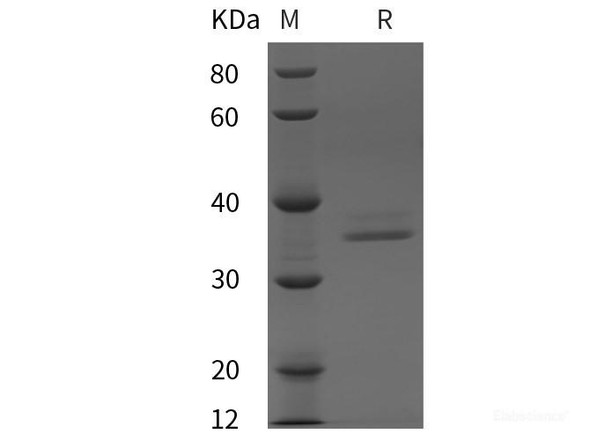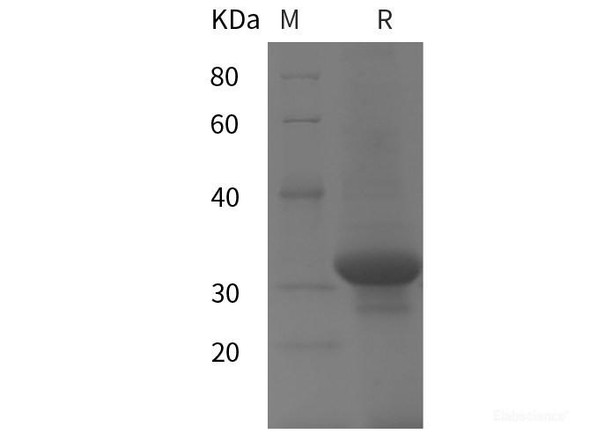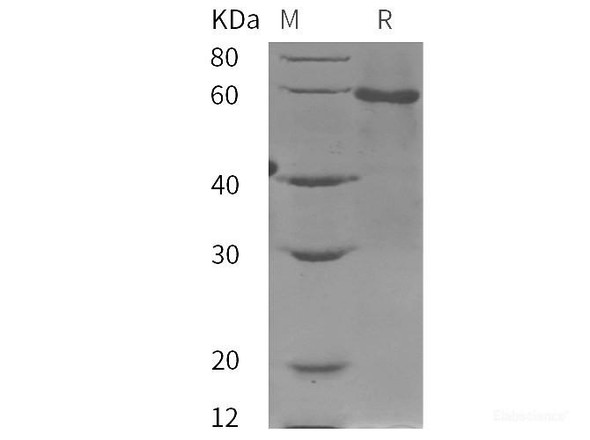| Sequence: | Met1-Lys322 |
| Accession: | P05089 |
| Storage: | Store at < -20°C, stable for 6 months. Please minimize freeze-thaw cycles. |
| Shipping: | This product is provided as liquid. It is shipped at frozen temperature with blue ice/gel packs. Upon receipt, store it immediately at < - 20°C. |
| Formulation: | Supplied as sterile solution of 25mM Tris-HCl, 150mM KCl, 1mM DTT, 20% glycerol,pH 8.0. Normally 5 % - 8 % trehalose, mannitol and 0.01% Tween80 are added as protectants before lyophilization. Please refer to the specific buffer information in the |
| Reconstitution: | Not Applicable |
| Background: | Arginase 1, also known as liver arginase, is a binuclear manganese metalloenzyme. It is a key enzyme of the urea cycle that catalyses the conversion of L-arginine into L-ornithine and urea, the final cytosolic reaction of urea formation in the mammalian liver. Arginase 1 is abundantly expressed in liver, but it is also expressed in cells and tissues that lack a complete urea cycle, including lung. Arginase is a critical regulator of nitric oxide synthesis and vascular function. It is implicated in a variety of human diseases including vascular disease, pulmonary disease, infectious disease, immune cell function and cancer. In humans, hereditary defects in arginase result in an accumulation of arginine in the blood known as hyperarginemia. Arginase deficiency can also result in the accumulation of nitrogen in the form of ammonia, which results in hyperammonemia. |










